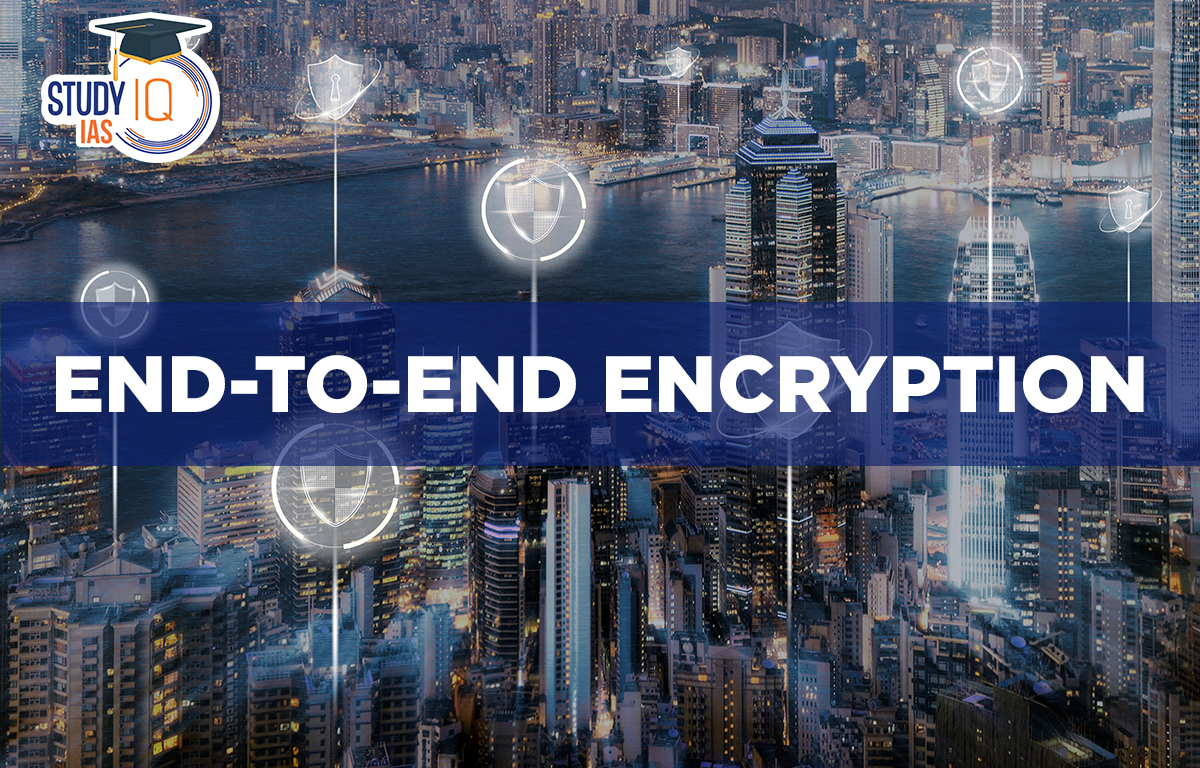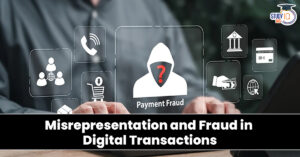Table of Contents
What is End-to-end Encryption?
- End-to-end encryption is a method of communication in which data being shared between two devices is encrypted.
- This method prevents third parties like cloud service providers, internet service providers (ISPs) and cybercriminals from accessing data while it is being transferred.
- Mechanism: The algorithm used in this communication method transforms standard text into an unreadable format. This format can only be deciphered and read by those with the decryption keys.
- These decryption keys are stored on endpoints and not with any third parties including companies providing the service.
- This method does not protect metadata, which includes information such as when a file was created, the date of sending message and the endpoints between which data was shared.
- Application: End-to-encryption is used while transferring business documents, financial details, legal proceedings, and personal conversations.
- It can also be used to control users’ authorization when accessing stored data.
- Currently, popular messaging apps such as Signal, WhatsApp, iMessage, and Google messages use end-to-end encryption.
Why are Companies using End-to-end Encryption?
- Threat to consumer data: Breach of consumer data has tripled between 2013 and 2021. More than 1.1 billion personal records were exposed in 2021.
- End-to-end encryption will provide additional protection against hacking attacks launched by well-funded groups.
- Protection against government snooping: End-to-end encryption technology secures users’ data from snooping by government agencies.
- This makes it popular among activists, journalists, and political opponents.
Working of End-to-end Encryption
Effects of End-to-end Encryption
- On Users: End-to-end encryption ensures that user data is protected from unnecessary parties such as service providers, cloud storage providers, and companies that handle encrypted data.
- Even if there is a data breach, data cannot be accessed by anyone else other than authorized party.
- On government agencies: End-to-end encryption makes it harder for service providers to share user information with authorities.
- Many government agencies have expressed displeasure at the idea of increasing use of end-to-end encryption by technology companies.
- These agencies believe that end-to-end encryption makes it convenient for terrorists to use messaging platforms to communicate without fear of eavesdropping.
- On companies: Securing user data will enhance the reputation of messaging platforms. Their user engagement is expected to increase.
End-to-end Encryption: Pros and Cons
| Pros | Cons |
| End-to-end encryption will prevent accessing data while it is being transferred. | Encryption does not hide the fact that data is being transferred. Record of transactions can still be found. |
| Since data is encrypted, there is no fear of manipulation through interception by third party. | The technology can be misused by individuals for their malicious activities, including terrorism. |
| Upholds individual privacy. Protects interests of rivals of establishment. | The protection offered by this communication service is not guaranteed if third party gets access to device. |
| Financial and business secrets can be protected from competitors. |


 Personality Rights in India: Expanding P...
Personality Rights in India: Expanding P...
 Judicial Recognition of Child Traffickin...
Judicial Recognition of Child Traffickin...
 Misrepresentation and Fraud in Digital T...
Misrepresentation and Fraud in Digital T...

























